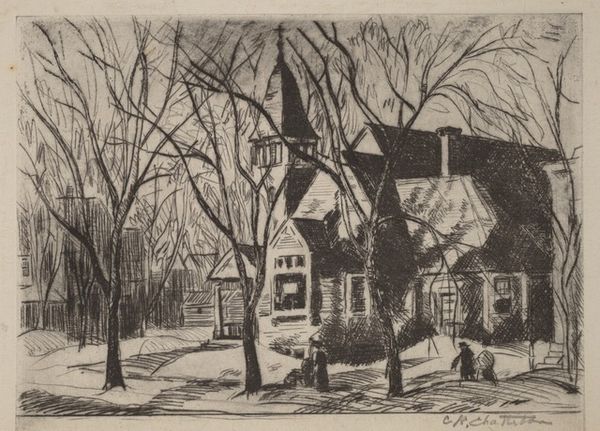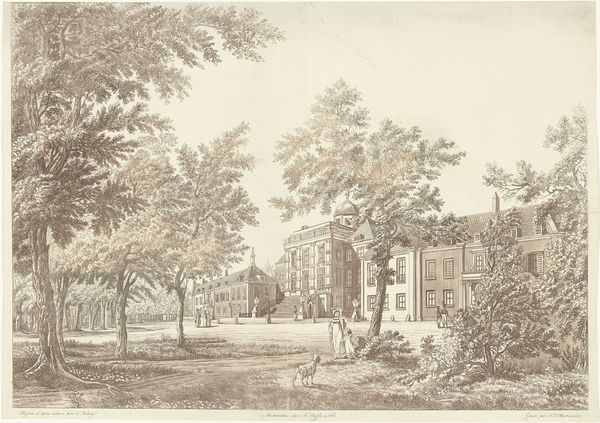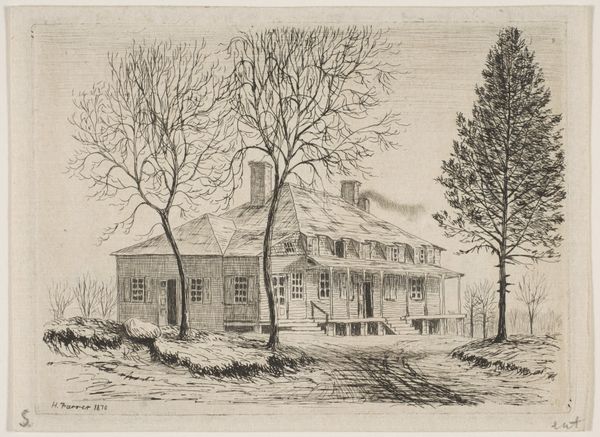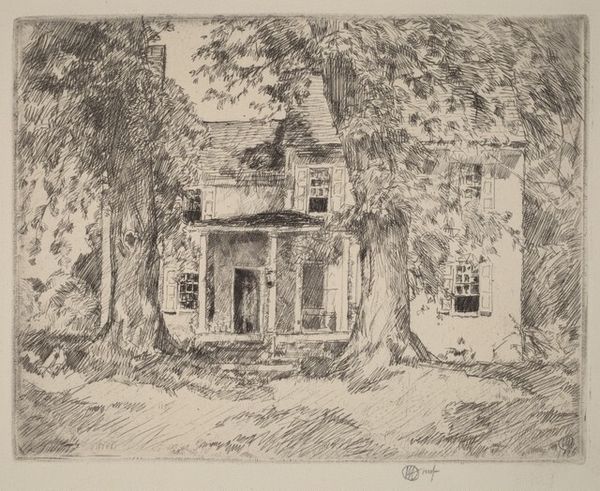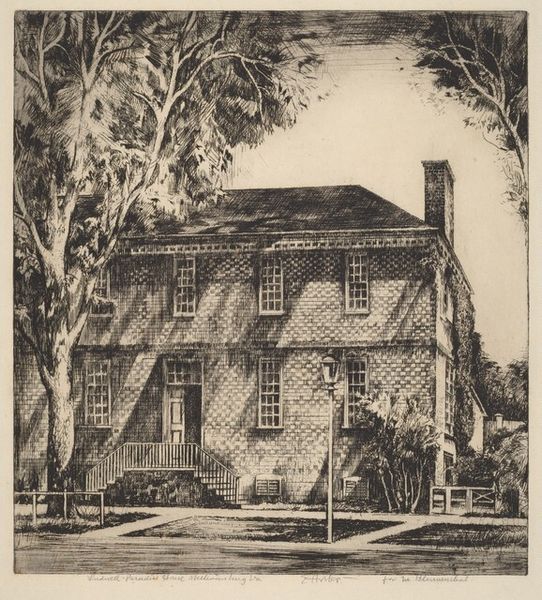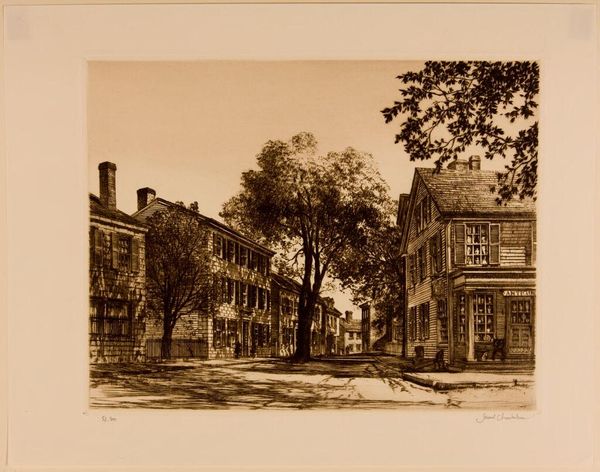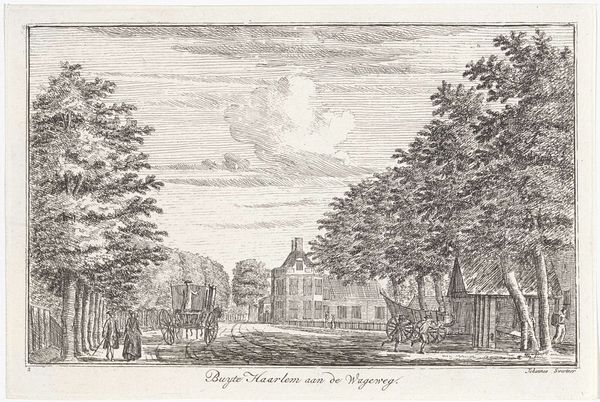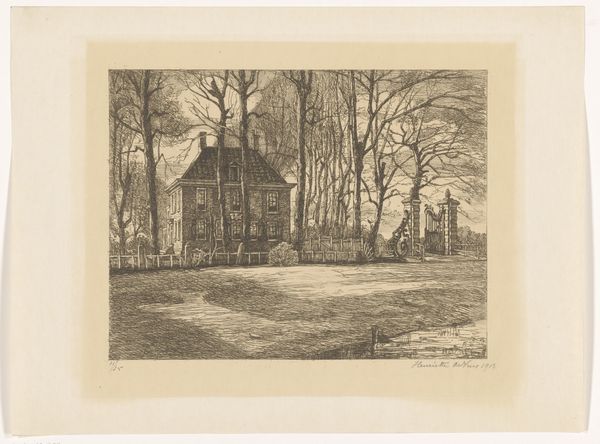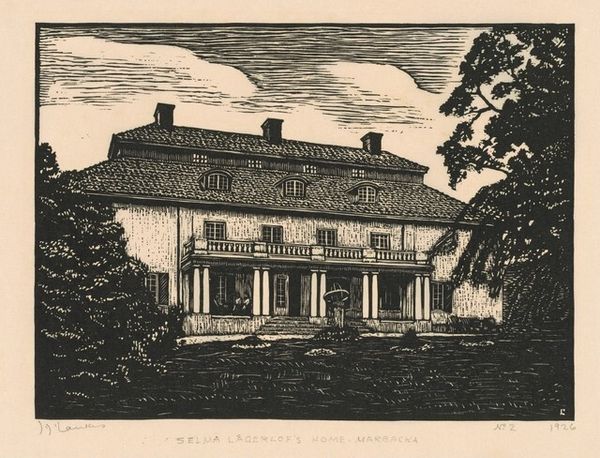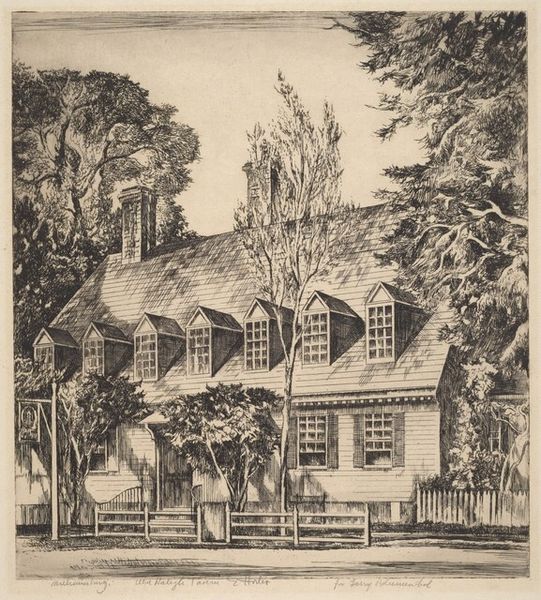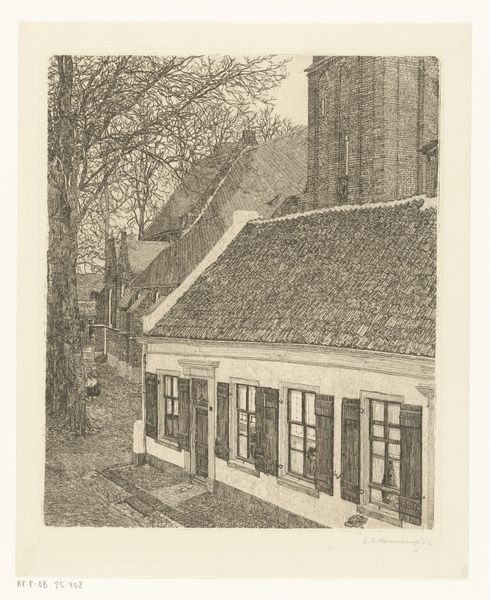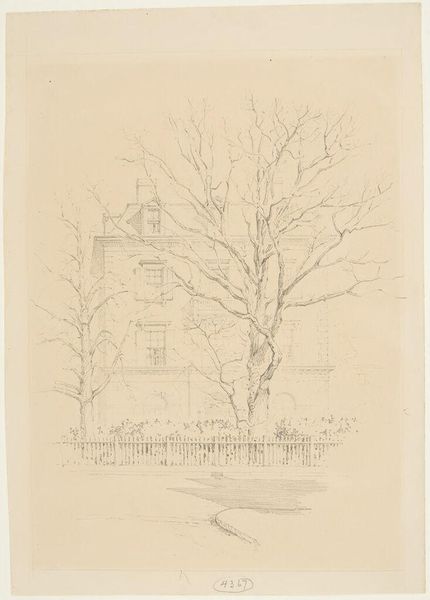
print, etching
# print
#
etching
#
landscape
#
cityscape
#
realism
Copyright: National Gallery of Art: CC0 1.0
Curator: The immediate feeling I get from this piece is one of quiet anticipation, like a moment just before something significant happens. Editor: Indeed. We are looking at an etching by George Joseph Mess titled "Stanhope and Reunion." Mess captures what seems like a collegiate scene. The texture is particularly rich. Curator: Yes, the light and shadow patterns definitely contribute to the almost tangible stillness, especially with the leafless trees in the foreground against that solemn architecture. To me, the buildings feel very… intentional. Do you know any historical details? Editor: Well, from a historical perspective, cityscapes and architectural prints like these often served to document and celebrate the progress and identity of a community, particularly in academic settings. The clean lines could signify civic pride in the institution itself, while that stark contrast you mention offers dynamism. Curator: That reading does make sense within this artistic moment. I think it highlights the kind of weight such institutions held for the students passing through, literally captured in that image in the middle ground of figures heading toward that doorway, in between stark shadows and illuminated spaces. Editor: Precisely. Given the title “Stanhope and Reunion,” do you consider that it may capture a certain… cyclical, almost ritualistic social event in time for those captured figures? Curator: Perhaps, this work operates like a stage set before the actors begin performing. Each brick laden with its symbolic charge, like memory and growth? Editor: Intriguing. Considering those shadowed, arching pathways along with that door and foliage… would you argue that such repeated arch motifs serve as entrances, framing gateways to the past and future? Curator: That seems absolutely likely. Arches often stand for liminality or transformative space, in this case, echoing a place in life—between formal education and professional life—in which students shape themselves. The arches lead our vision both upwards, heavenward, and inwards towards self reflection. Editor: An interpretation that encourages thought regarding this fine balance achieved in ‘Stanhope and Reunion’! These elements surely mark its moment in our timeline. Curator: And with that in mind, it remains relevant to our collective experience.
Comments
No comments
Be the first to comment and join the conversation on the ultimate creative platform.
